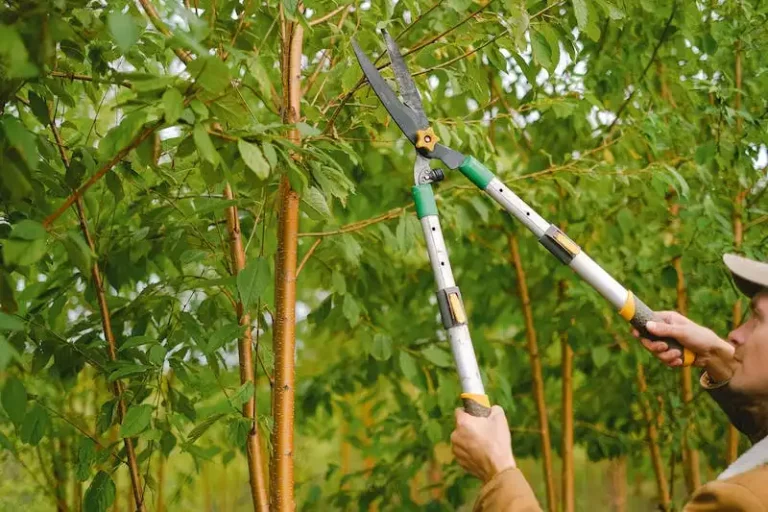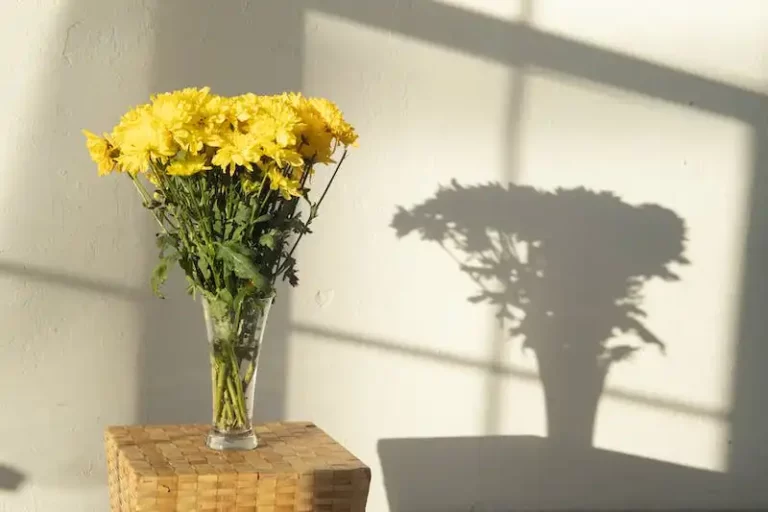If you’re a beginner or just tired of the same old plants in your garden, annuals are a great option for adding variety and color to your outdoor space. Annual plants grow and bloom for one season, and then die off, whereas perennials come back year after year. Annuals are easy to find and come in all kinds of colors, shapes, and sizes, so you have plenty of options to choose from when it comes to planting. They are also a great way to fill in bare spots or add some fresh foliage to your garden.
One of the best things about annuals is that they are fast-growing and often provide beautiful blooms within just a few weeks of planting. They can be started from seeds or purchased as young plants from a nursery. If you choose to start from seeds, be sure to follow the package instructions for planting depth and spacing. Some plants, like calendula and poppies, are easy to sow directly in the garden, whereas others, like begonias and nasturtiums, are best started indoors before the last frost.
When planting annuals, it’s important to consider the specific needs of each plant. Some annuals, like marigolds and zinnias, love full sun and can tolerate the heat, whereas others, like impatiens and begonias, prefer partial shade. Be sure to choose annuals that are well-suited to the conditions in your garden, whether it’s sunny, shady, or somewhere in between. Additionally, you’ll want to consider the watering needs of each plant. Some annuals, like threes, are drought-tolerant and don’t need much watering, whereas others, like begonias, are more thirsty and require more frequent watering.
If you’re looking for a low-maintenance option, there are also some heat-tolerant annuals that are less demanding when it comes to water and care. These plants are perfect for hot and dry climates or for gardeners who don’t have much time to devote to watering and fertilizing. Some examples of heat-tolerant annuals include marigolds, zinnias, and portulaca. These plants are known for their ability to thrive in high temperatures and can still provide a show of vibrant colors even in the sweltering summer heat.
Caring for annuals is relatively simple, but there are a few things you can do to ensure they stay healthy and show off their best colors all season long. Regular deadheading, or removing spent flowers, can help encourage more blooms and keep the plants looking their best. Fertilizing every few weeks with a balanced plant food can also help promote healthy growth and flowering. And don’t forget to water regularly, especially during dry spells or hot weather. Mulching around the base of the plants can help retain moisture and keep the soil cooler.
Whether you’re a beginner or an experienced gardener, annual plants can be a great addition to any garden. They provide a season-by-season show of color and are a fun way to experiment with different plants and flowers. With their wide variety and easy care, annuals offer all the beauty and none of the commitment of perennial plants. So go ahead and try planting some annuals this season – you won’t be disappointed!
12 Easy Annuals Beginner Gardeners Should Plant
Planting annuals can bring vibrant color and beauty to any garden. If you’re a beginner gardener, starting with easy-to-grow annuals can help you achieve success and enjoy the rewards of your efforts. Here are 12 annuals that are perfect for beginners:
- Marigolds: Marigolds are popular annuals that come in a variety of colors and grow well in both containers and garden beds. They are easy to grow from seed and will flower all season long, making them a great choice for beginners.
- Begonias: Begonias are easy to care for and love partial shade. They come in many varieties and can be used as bedding plants or in containers.
- Calendula: Calendula, also known as pot marigold, is a low-maintenance annual that blooms with beautiful orange and yellow flowers. They can be planted from seed and are great for attracting pollinators to your garden.
- Ageratum: Ageratum is a popular choice for borders and bedding as they produce fluffy, blue flowers that bloom all season long. They are easy to grow and come in both tall and compact varieties.
- Salvia: Salvia is a heat-tolerant annual that thrives in full sun. They have beautiful spikes of flowers that attract butterflies and hummingbirds. They are easy to grow and require minimal watering.
- Carnival: Carnival is another easy annual to grow, and it adds brilliant colors to your garden. These plants are great for planters and hanging baskets.
- Spreading annuals: Spreading annuals like petunias are perfect for filling in empty spaces in your garden. They grow quickly and help prevent weeds from taking over.
- Deer-resistant annuals: If you have deer in your yard, choosing deer-resistant annuals like impatiens and snapdragons can help protect your plants from being eaten.
- Half-hardy annuals: Half-hardy annuals like zinnias and cosmos are easy to grow from seed and will bloom for a long time. They are great for cut flowers and are suited for areas with cooler summers.
- Transplanting annuals: Some annuals, like marigolds and begonias, can be started indoors before transplanting them outside. This can give them a head start and help ensure success in your garden.
- Compost and watering: Annuals, like all plants, benefit from good soil health and proper watering. Adding compost to your garden beds and containers and watering them regularly will help your annuals thrive.
- Garden planning tips: When planting annuals, consider their height, spread, and colors. Arrange them in groups by color or height for a more visually appealing garden.
By following these tips and choosing easy annuals, beginner gardeners can have a successful and beautiful garden all year long. Whether you’re looking to add seasonal color or create a lush oasis in your yard, annual plants are a great choice for beginners.
Celosia
Celosia is an annual plant that is often used in flower beds or containers. It requires full sun and well-drained soil. When planting celosia, make sure to give each plant enough spacing to grow, as they can get quite large. In terms of planting, you can either start celosia from seeds or purchase young plants from a nursery or garden center. If you choose to start from seeds, make sure to transplant them once they have a few sets of true leaves.
Celosia is a drought-resistant annual that is well-suited for hot and dry climates. It is also deer-resistant, making it a great choice for gardens where deer are a frequent problem. When it comes to caring for celosia, mulching the soil can help retain moisture and suppress weeds. Fertilizing is not necessary if you start with nutrient-rich soil, but if you feel that your plants need a boost, you can use a balanced fertilizer.
Celosia comes in a variety of shapes and colors, including plume, crest, and spike. One of the pros of growing celosia is that they are a showstopper in any garden, thanks to their vibrant blooms. On the downside, celosia is an annual plant, so it will need to be replaced each year. However, the selection of celosia varieties available makes it worth the extra cost.
When it comes to the season-by-season guide, celosia should be started indoors early in the spring. Once the danger of frost has passed and the weather starts to warm up, you can transplant your celosia plants outside. They love full sun and warm temperatures, so make sure to plant them in a sunny spot.
When it comes to watering celosia, they prefer to be kept evenly moist. They don’t like to sit in water for too long, as this can lead to root rot. On the other hand, they don’t like to dry out completely either. So it’s important to find the right balance and water regularly, especially during hot and dry periods.
If you’re tired of the same old begonias and marigolds, celosia is a great plant to include in your garden. It adds a pop of color and its unique shape is sure to catch the eye. Whether you grow celosia in flower beds or containers, it’s a plant that is sure to thrive and bring fresh blooms all season long.
One thing to note is that celosia is susceptible to powdery mildew, a fungal disease that can affect its leaves. To prevent this, make sure to provide good air circulation and avoid watering the foliage. Also, removing any infected leaves can help keep the disease from spreading.
In conclusion, celosia is a beautiful and versatile annual plant that can add a touch of color and interest to any garden. Whether you’re a beginner or experienced gardener, celosia is a great choice for its ease of care and stunning displays. With its drought-resistant nature, deer-resistant properties, and vibrant blooms, celosia is a plant that is sure to bring joy and beauty to your garden.
Lantana
Lantana is a popular annual plant that adds beauty to any yard. It is known for its vibrant and showstopping blossoms, which come in a wide variety of colors. When choosing lantana for your garden, it’s important to know that they thrive in warm and sunny areas, so they aren’t the best choice for cooler climates.
The basics of planting lantana are fairly simple. They prefer well-drained soil, so make sure to prepare the hole properly before planting. Dig a hole that is slightly larger than the root ball of the plant. Place the lantana in the hole and fill it with soil, ensuring that the plant is at the same level as it was in the pot. Water the plant thoroughly after planting.
Lantana is an easy-to-grow plant, perfect for beginners. They are drought-resistant and require minimal care throughout the year. However, it’s important to provide them with regular watering during the warm months to help with their growth and flowering. Mulching around the base of the plant can help retain moisture and prevent weed growth.
For a stunning display of lantana, plant them in groups or clusters. This will create a beautiful contrast of colors and a fuller appearance. Lantana plants are also known for their spreading nature, so be sure to provide enough space for them to grow.
One great tip for caring for lantana is to deadhead the flowers regularly. This means removing the spent flowers to encourage new blossoms to grow. Pruning lantana in early spring can also help maintain a compact and bushy shape.
In colder areas, lantana can be treated as an annual or brought indoors during the winter months. If you choose to bring them inside, make sure to provide enough light and water for them to survive. Lantana can also be propagated through seeds or cuttings, giving you the opportunity to grow new plants the following year.
In conclusion, lantana is a gorgeous and easy-to-grow annual plant that can brighten up any garden. With their true colors and drought-resistant nature, they are a great choice for planting in sunny areas. Whether you’re a beginner or an experienced gardener, lantana is sure to add beauty and vibrancy to your outdoor space.

